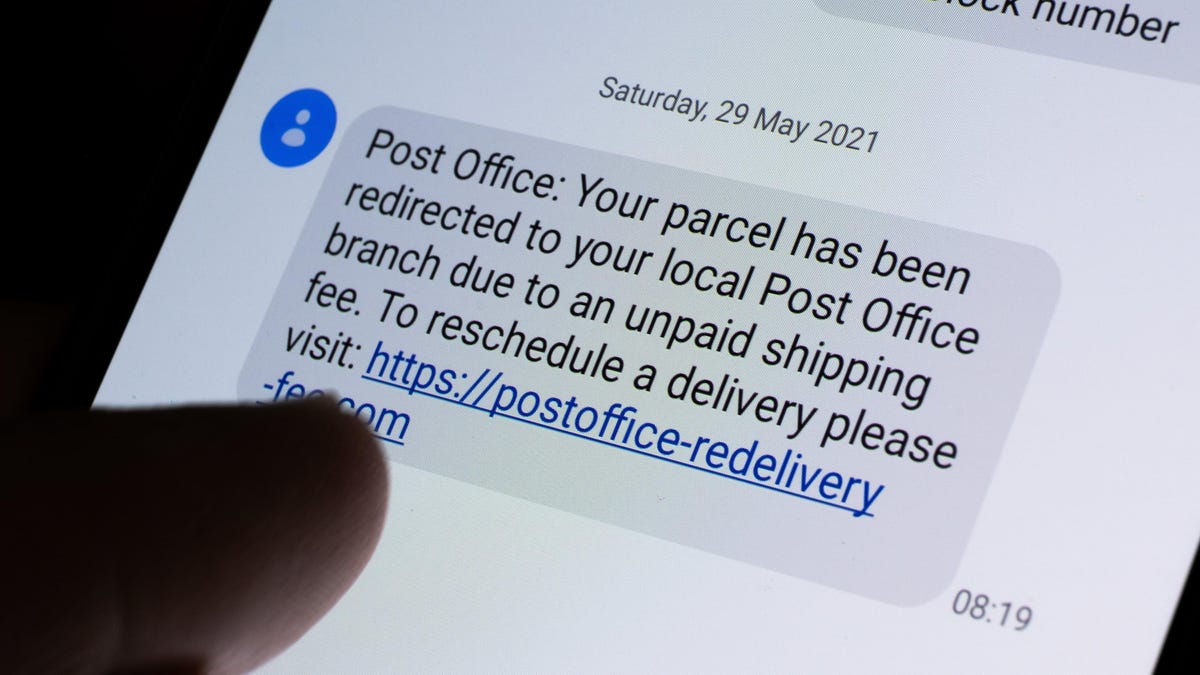How to Determine If a Package Delivery Message Is a Fraud

Consumerism looks very different today than it did 10 years ago. Most people won’t go to the store for, say, a bottle of water—they’ll just order it from Amazon or some other online retailer. This means that many American households have at least one order awaiting delivery at any given time. Unfortunately, scammers use this fact to try to steal your sensitive information by sending you fake text messages about package delivery.
Last year, fake package delivery scams became one of the biggest text message scams of 2022, the Federal Trade Commission (FTC) reported last year. Text message scams have cost Americans $330 million this year, according to the Federal Trade Commission. Here’s what you need to know to stay safe.
How does the fake parcel delivery scam work?
Scammers will send victims emails or text messages pretending to be the US Postal Service, FedEx or UPS about a fake delivery coming to your address, with a “tracking link” that you are asked to click to update your delivery details or select your preferences. payment, according to the Better Business Bureau (BBB).
According to the Federal Communications Commission (FCC), if you click on the link, you will be prompted to provide your personal information on the website or you may download malware onto your device that could steal your information. Some scammers may try to call you or leave a voicemail with a call-back number to trick you into “confirming your payment method” over the phone. Some also ask you to pay some “tax” or “fee” before shipping.
How to Tell If a Delivery Message Is Legitimate or Fake
Scammers will often ask you for some payment or personal information – this is the best way to track them down. None of the official delivery options will ask you to provide personal or financial information over the phone. They may send you updates or tell you about some status changes, but they already know who you are and where you live and already have your payment information on file.
Here are some tips from FedEx :
- Do not respond to a sender who sends suspicious messages, and watch for misspellings on websites or email addresses such as Fedx.com or Fed-ex.com, as well as exclamation points and excessive use of capital letters in the message.
- Always use the latest versions of the FedEx mobile app to ensure you are not redirected to fake websites.
- Report fraud to abuse@fedex.com, 1-800-GoFedEx or 1-800-463-3339.
Here are some tips from UPS :
- All UPS telephone calls will be placed at 1-833-242-1931.
- Texts will come from numbers 94601, 69877, 48515 or 52892.
- These are all legitimate emails from UPS: accountconfirm@ups.com, mcinfo@ups.com, pkginfo@ups.com, customer-notifications@ups.com, auto-notify@ups.com, emailinfo@ups.com, invoice. -notification@ups.com, donotreply@ups.com, ups@emails.ups.com, ups@upsemail.com UPSAdministrationSupport@ups.com or no.reply@upsbilling.ups.com.
- Report fraudulent emails or text messages to Frad@ups.com.
Here are some tips from USPS :
- Without clicking the web link, copy the body of the suspicious text message and report it to spam@uspis.gov along with a screenshot, your name, the sender’s phone number, and the date it was sent.
- Include relevant information in your email, such as whether you clicked a link, lost money, provided any personal information, or whether your credits were affected.
- Use USPS Text Tracking to track your packages by texting 2USPS (28777) with your tracking number.
Here are some tips from Amazon :
- If Amazon sends you an email with an attachment, it should say “Amazon Protected Attachments.”
- On legitimate Amazon websites there will always be a dot before the “amazon.com” part, such as http://something.amazon.com . If you see an email with an IP address such as http://123.456.789.123/amazon.com , then it is most likely a phishing attempt.
- If Amazon’s service asks you to install software on your device, contains grammatical errors, or has a fake email address that looks like it belongs to Amazon, then it’s most likely a scam.
- Amazon sometimes calls customers, but they will never ask you for sensitive or personal information over the phone or send you a surprise refund.
If you receive a message from a scammer, forward it to number 7726 (SPAM). They will help your mobile operator block messages from these numbers. You can also file a complaint with the FTC here . If you are a victim of fake text messages, file a report with your local law enforcement and the FBI Internet Crime Complaint Center here .